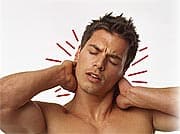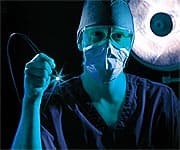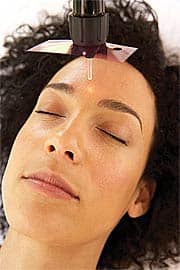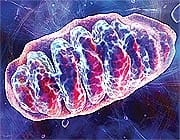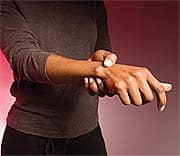Life Extension Magazine®
Pharmaceutical companies have deceived the public into believing that the solution for chronic pain is to take drugs. Millions of people have perished from the side effects of these drugs, and their effectiveness in relieving pain is only temporary at best. In a landmark discovery, a technology utilizing low-level laser light therapy is providing safe and long-lasting relief for the most common types of chronic pain. As this novel approach slowly winds its way through clinical studies in the United States, a pioneering doctor in The Bahamas is making this therapy available right now! Imagine a man so hobbled by degenerative arthritis that he could scarcely walk 30 yards before his pain overcame him. Then envision that through a combi-nation of good fortune and brilliant thinking, that man became able to relieve his own pain and return to normal activity levels—a fairy tale or a modern miracle? Neither—instead, this is just part of the true story of Dr. Robert Nordquist and his journey from pain to performance, as he learned about the astonishing powers of low-level laser therapy (LLLT). We’ll start with Dr. Nordquist’s heart-warming personal story, and more about his extensive experience in treating people suffering from chronic pain. We’ll also provide some independent details about how LLLT works, and its worldwide track record in relieving chronic pain of many kinds. Finally, we’ll make a “virtual visit” to the new chronic pain treatment center, offering a first-hand view of what a new patient might expect in the quest for lasting pain relief. Some BackgroundLight has been a metaphor for goodness, health, wisdom, and healing in human culture for as long as there’s been human culture. By the mid-20th century, phototherapy was available for various skin conditions, and with the invention of the medical laser light, it became accepted by the mainstream. It was a medical laser that led Dr. Nordquist to make his own first foray into the world of laser treatment for chronic pain. We asked him to tell us what happened.
“It was very simple, really,” Dr. Nordquist replied. “Having been active in sports my knees had taken some serious punishment. I had severe osteoarthritis (degenerative arthritis) in both knees—so bad that I literally couldn’t walk more than 30 yards before it was just too painful to walk. I’d already had knee surgery once to remove a meniscus (the cartilage “shock absorber” that lines the knee joint), so I literally had ‘bone grinding on bone.’ Finally, I decided to get some help, and I spoke to an orthopedic surgeon who was a friend of mine. He suggested that I should join him in the operating room to watch a knee-replacement surgery, and I went along with it. Frankly, what I saw in that operating room was the last resort, and I went away feeling that I needed to find a better way!” Dr. Nordquist obtained a relatively low-powered, FDA-approved surgical laser to tinker with, having read early reports from Eastern Europe about success with laser light therapy for pain. “No one really knew why the treatment worked at that time,” he reports. “To some extent they may simply have been desperate to find alternatives to medications and surgical procedures they couldn’t afford. At any rate, the initial reports, while encouraging, were all over the place in terms of their results. A lot of that probably had to do with differences in what kinds of lasers they were using, how much power they were delivering to the tissues, how long they were treating, and what sites on the body were being treated. I decided to go about it in a more rigorous fashion.” Indeed, despite early reports of success,1 when one examines the literature on low-level laser therapy (LLLT) up through the mid-1980s, one finds a wide variety of results, and many strong calls for better studies and more clearly-defined outcomes.2
“I had to modify the laser I was going to use,” Dr. Nordquist went on, “because since it was a surgical laser, it was still capable of cutting or injuring skin—definitely not the effect I was looking for. Once I cut the power down to size, I just started making my own protocols to treat the knee pain. Many of the first reports I had read referred to ‘laser acupuncture,’ in which the laser beam is applied to known acupuncture points,3 but that approach wasn’t always entirely successful.4,5 With my professional knowledge of the anatomy of the human nervous system [Dr. Nordquist is a trained pathologist], I was able to combine the acupuncture points with other anatomical sites that my orthopedic colleague and I knew were involved in pain perception. So my first attempts were really well-educated guesses about treatment zones and times.” While those early attempts may have been educated guesses, they produced dramatic results. “When I stepped down off that treatment table the first day,” Dr. Nordquist remembers, “it was the first time in years that I set foot on the ground without feeling like knives were going through my knees!” Dr. Nordquist repeated his home-grown treatment a total of ten times—and walked entirely pain-free for the next three years. There have been some additional health benefits as well: “Within months of my first treatment I found I was losing weight—in fact, I went from just over 220 pounds to my present weight of just about 180. I know it was because I was finally able to walk without pain, so I could engage in some normal, healthy activity,” Dr. Nordquist reflects. In a nation with a growing epidemic of obesity,6 that’s no small success itself—particularly since people who are overweight or obese are much more likely than others to develop osteo-arthritis and other bone and joint problems.7,8 Weight loss itself is also known to improve both pain and function in people with arthritis, so pain relief leading to weight loss has excellent potential for preventing further painful joint injury.9 Armed with his modified laser, his professional anatomical knowledge, and his life-changing personal experience, Dr. Nordquist set out to bring the benefits of his program to other sufferers of chronic pain. “I’ve treated more than 300 patients using that same original modified laser,” he notes. But the treatment protocol itself has undergone many revisions and fine-tunings along the way. “Our current system uses a proprietary computer program,” Dr. Nordquist said. “We enter in a host of patient-related variables such as age, gender, weight, general health status, and so forth, as well as what specific body area is involved.
Based on a specialized database that includes the acupuncture points and known locations of nerve ganglions [“relay nodes” in the nervous system] as well as other information, the computer then generates a customized, unique treatment regimen for each patient.” That computer-generated plan includes directions for the laser operator about sites, or zones, on the body where the laser is to be applied, duration of treatment at each zone, and energy levels for the laser beam to deliver. In other words, Dr. Nordquist has taken his “home-made” low-level laser treatment and turned it into exactly the kind of rigorous, scientifically based method with well-documented outcomes that pain experts had been demanding for years.2,10 But is it effective? “I know it may sound hard to believe, but of those 300 patients, more than 90% have reported total pain relief,” he adds. “And more than half of the others have experienced at least partial relief of their pain after 10 full treatments. Really only about 2-3% of my patients have truly had no beneficial effects.” For the past five years, the FDA has approved several lasers for the treatment of pain. FDA approval is important in getting insurance programs to cover the therapy. “We’ve found that several private insurance companies do offer coverage now,” Dr. Nordquist reports. (These include Blue Cross Blue Shield, Workmen’s Compensation, and others.) We asked about which areas of the body seem most amenable to pain relief using Dr. Nordquist’s newly FDA-approved system. “We get results that can only be called spectacular when we work with people who have osteoarthritis of the knees and ankles,” Dr. Nordquist said. “One case in particular sticks in my mind because it again involves a physician as a patient—in this case an internist colleague of mine. We had just finished her first treatment for severe pain in the knees and ankles, and she didn’t say much as she stood up and prepared to leave. But as she went out the door I remember that she turned with a big smile and said, ‘oh wait—I’m leaving something behind here. I’m leaving my pain behind!’” But Dr. Nordquist hastened to point out that his LLLT system is effective in many other areas of the body as well, in particular for neck pain and low back pain—two areas that are notoriously difficult to treat with standard medical therapies.11,12 In fact, a clinic in The Bahamas is offering treatment at a total of 16 distinct anatomical sites on the body; patients with pain in other areas may well be able to work out a unique and completely customized plan for themselves (LLLT has been used to treat everything from carpal tunnel syndrome and tennis elbow to chronic dental and jaw pain).13-16
Low-Level Laser Treatment—How It WorksDr. Nordquist and his colleagues at the Bahamas Anti-Aging Medical Institute are launching a program to offer low level laser therapy. But we at Life Extension wanted to dig a little deeper to try to learn first how it is that such low-intensity light can have any real effect on human tissues, and also to review the published evidence that has accumulated since those first reports from Eastern Europe in the 1960s. Here’s a summary. Lasers used in surgery, of course, literally burn through tissue—but the very low-intensity of the light beams used in LLLT have a constructive, rather than a destructive, effect. It turns out that LLLT probably has its most profound effects on the microscopic intracellular structures called mitochondria.17 When the gentle but penetrating beams of the LLLT laser illuminate cellular mitochondria, mitochondrial energy production is increased, which may help relieve local inflammation and pain.17 Low-level laser therapy may also assist in the process of wound and tissue healing through boosting microcirculation, promoting cellular proliferation, and reducing inflammatory activity that contributes to the cycle of chronic pain.18,19 Most dramatically and recently, Australian researchers have identified a direct effect on the flow of cellular materials down the long axon that makes up the “wiring” of nerve cells.20 In essence, the low-level light basically “stuns” the nerve cells. In their own words these researchers have discovered that “laser-induced neural blockade is a consequence of such changes and provides a mechanism for… laser-induced pain relief. The repeated application of laser in a clinical setting modulates nociception [pain perception] and reduces pain. The application of laser therapy for chronic pain may provide a non-drug alternative for the management of chronic pain.” It’s good to know how it works—but even better is knowing that it works. Fortunately for those who suffer from chronic pain, there’s a massive body of literature on LLLT’s effectiveness—so long as it is delivered by skilled, knowledgeable, and experienced practitioners. LLLT—Treatment with a Global Track RecordAfter the first few early reports from then-Soviet Eastern Europe that first caught Dr. Nordquist’s attention, there was a long period during which fairly poor quality research was being performed. Said Dr. Nordquist, “Those early researchers weren’t at all sure how the therapy worked, they were using many different sites for applying the lasers, and they were all using different kinds of lasers at a whole range of power settings and treatment times. It’s hardly surprising that their results were not consistent.” But as more and more scientists from around the world became interested in trying to understand LLLT and its effects, there were growing calls for better and more organized research.2 By the first years of the new millennium, there had been a small explosion of well-designed and rigorous studies, exploring various treatment regimens and, increasingly, combining age-old acupuncture wisdom with modern knowledge about neuroanatomy and physiology. Here are just a few of the specific areas in which rigorous methods have been used to define the effectiveness of LLLT for pain at various body sites. Mouth and Jaw PainPain in the oral cavity and jaw can be debilitating, and dentists and orthodontists have always been deeply concerned about pain management in their patients. The temporomandibular joint (TMJ), or jaw joint, is the most common site of chronic orofacial (mouth and face) pain, with as many as one-third of adults reporting one or more symptoms.21,22 LLLT is emerging as a promising approach to this painful group of disorders. Turkish orofacial surgeons led the way with a study of 39 patients with TMJ pain, treating 24 with LLLT and 15 with a placebo laser treatment daily for two weeks, excluding weekends.14 The LLLT patients had significant improvements in their maximal mouth opening ability (which is typically limited in TMJ syndrome), pain, and chewing difficulty compared with the placebo group. Similar findings have now come from the Czech Institute for Biophysics in Prague,23 and the Department of Restorative Dentistry at the University of Sao Paulo, Brazil.24 The Czech researchers reported finding more pronounced results in the people who had had the longest-lasting pain.23 Finally, orthodontists in both Japan and Austria have reported powerful pain-relieving effects of LLLT in young adults treated immediately following application of braces, further demonstrating the speed with which LLLT can take effect.16,25 | ||||||
Neck and Back Pain
Chronic neck and lower back pain trouble millions of adults, and are notoriously difficult to conquer using traditional medical or surgical techniques. LLLT is showing tremendous promise in this challenging group of patients. For instance, Australian pain researchers treated 90 subjects with chronic neck pain, randomly assigning them to receive either an active laser or a “sham” (placebo) light source.26 The mean pain scores dropped by approximately 50% in the treated group while actually increasing slightly in the placebo group, and measures of quality of life showed substantial improvements in the LLLT group as well. Pain relief in this very difficult-to-treat group of patients lasted at least three months (the researchers did not follow the patients longer, so we don’t know how much longer the effects actually lasted). Iranian researchers have now found similarly encouraging results in people with chronic low back pain.27 They treated 61 adults with pain that had lasted at least 12 weeks, providing a third of the patients with LLLT alone, a third with LLLT plus exercise, and a third with placebo laser plus exercise. The people treated with both low-level laser and exercise experienced significant improvements in pain scores, range of movement, and overall disability compared with the exercise-only group. This is a remarkable finding in patients who are typically resistant to almost any form of pain relief! Turkish researchers studying acute herniated disk pain have also found that LLLT is an effective non-surgical option for people with this debilitating condition that has often required surgical interventions.28 Wrist and Elbow PainUpper extremity pain plagues virtually everyone from time to time, and an unfortunate large minority of people suffers from such pain more or less constantly. Two of the biggest culprits, carpal tunnel syndrome and lateral epicondylitis (“tennis elbow”) both arise from overuse of the wrist or arm, and both can cause not just pain but loss of grip strength along with paresthesias (numbness and tingling). Traditional management of both conditions has included use of oral pain and anti-inflammatory medications and sometimes painful steroid injections. Carpal tunnel syndrome may ultimately require surgery to release pressure built up by inflamed tendons passing through the narrow bony channel at the wrist. Both of these maddening conditions are now yielding to management with LLLT, with studies from around the world demonstrating decreases in pain scores and functional status, including in many cases improvements in grip strength.15,29-31 At least one study has also found LLLT to be superior to traditional bracing for tennis elbow sufferers.32 Knee and Ankle PainIn addition to Dr. Nordquist’s own extensive experience with pain in the lower extremities, there’s good evidence from other researchers around the world that LLLT is effective in reducing pain in the knees.5,33 Astonishingly, some orthopedists and anesthesiologists are now reporting success of LLLT in treating acute joint and tissue injuries such as ankle sprains as well as accelerating functional recovery.34 Summary of StudiesIn addition to the many individual studies demonstrating the potency of LLLT at treating chronic pain, there are now dozens of “systematic reviews” that summarize the results of smaller studies. Scientists and practicing physicians alike often rely on these powerful articles to help them distinguish between truly effective forms of treatment, and those that may look good in small individual studies but fall short on closer analysis. LLLT passes this rigorous test with flying colors, with favorable systematic reviews now available on its benefits in treating chronic pain in the TMJ area, neck pain, and pain in all major joints in the extremities.12,13,22,35-41 A “Virtual” Experience in Dr. Nordquist’s LLLT CenterWith this tremendous collection of positive information about LLLT in hand, we asked Dr. Nordquist to describe a typical first experience in his treatment center. What, we wondered, could patients expect as they come through the door?
“It’s a very non-threatening experience,” Dr. Nordquist explained. “The first thing we do is a thorough physical examination by a board-certified internist who is also skilled in integrative medicine. We do that mainly to be sure the patient’s pain isn’t a sign of a more troubling condition such as a tumor or fracture—the LLLT treatment itself is so safe that there really aren’t any medical conditions that would be contraindications. We do see LLLT as part of a comprehensive approach to healthy lifestyles, of course, and the Bahamas Anti-Aging Institute encourages and supports the use of nutritional and hormonal treatments as well—that’s one of the reasons why we think we are such a good fit for the Institute. “After the initial physical exam, patients receive an actual prescription for 10 individualized treatment sessions with LLLT,” Dr. Nordquist continued. “That way patients can be certain that every treatment is done only under a physician’s supervision. Patients then complete a comprehensive form (we can help them with that), so that we can understand exactly where their pain is, what it feels like, what makes it better and worse, and so on. We enter all of that information into our custom-built computer program, which produces an individualized treatment plan specifying the specific target zones for treatment, the duration for each zone, and the laser energy that is best-suited for that person’s condition.” We asked about duration of treatments, and how long people could expect the results to last. “Treatment at each specific zone lasts only about a minute,” Dr. Nordquist said. “So even though we target many different zones at each painful site, we can typically complete one treatment session within 30 minutes.” Patients receive one complete treatment session daily for 10 days, usually experiencing considerable relief immediately. “Most of our patients have reported excellent control of their pain for at least two to three years,” Dr. Nordquist pointed out with justifiable pride. What’s the recommendation for activity during and after the treatments? “We ask them to take it easy during their treatment period,” replied Dr. Nordquist. “After the entire course of therapy is finished, we do remind them that we’ve controlled their pain, but that they need to use ordinary common sense about strenuous activity, in order to avoid exacerbating the underlying condition. But when people are able to move about with ease again, we often see that they lose weight, and that by itself can often help reduce further joint damage.” What about prescription medications and painkillers? Can people reduce their dependence on these drugs? “Let me tell you about my most rewarding experience with LLLT,” was Dr. Nordquist’s reply. “And this is not an unusual story in this field. A young woman on crutches was assisted into my clinic by her husband and child—she’d been terribly overweight and had undergone gastric bypass surgery, but she was left with severe degenerative arthritis of the knees. She was on heavy doses of prescription narcotics, was having sleep disturbances, and her employer and family were concerned that she was addicted to the medications. By the eighth or ninth treatment session, she’d stopped all of her medications—and she came to her 10th session unassisted, walking like a child again!” SummaryThe astonishing ability of human tissue to interact with low-intensity, non-destructive laser light has opened a new world of possibilities for those who suffer from chronic pain. Dr. Nordquist is now able to bring that healing power to a larger group of patients, thanks to the partnership that he’s spearheaded with the Bahamas Anti-Aging Institute, where his new LLLT center is now open. There are no known ill effects to the use of these very low-powered lasers. This treatment modality may be covered by several private insurers, though many patients will have to pay out of pocket. Scientists from around the world have contributed to the massive evidence base for the effectiveness of LLLT—and the relief of human suffering as a result is truly staggering to consider. Dr. Nordquist along with Norman Gay, MD and his colleagues have opened a center for LLLT at the Bahamas Anti-Aging Medical Institute. According to Dr. Nordquist, “The Institute specializes in chronic pain management, creating integrative programs that incorporate the most cutting edge therapies with standard therapies to assist the patient with management of their chronic pain.” If you have any questions on the scientific content of this article, please call a Life Extension Health Advisor at 1-800-226-2370. | ||
| References | ||
| 1. Walker J. Relief from chronic pain by low power laser irradiation. Neurosci Lett. 1983 Dec 30;43(2-3):339-44. 2. Bjordal JM, Couppe C, Chow RT, Tuner J, Ljunggren EA. A systematic review of low level laser therapy with location-specific doses for pain from chronic joint disorders. Aust J Physiother. 2003;49(2):107-16. 3. Whittaker P. Laser acupuncture: past, present, and future. Lasers Med Sci. 2004;19(2):69-80. 4. Aigner N, Fialka C, Radda C, Vecsei V. Adjuvant laser acupuncture in the treatment of whiplash injuries: a prospective, randomized placebo-controlled trial. Wien Klin Wochenschr. 2006 Mar;118(3-4):95-9. 5. Yurtkuran M, Alp A, Konur S, Ozcakir S, Bingol U. Laser acupuncture in knee osteoarthritis: a double-blind, randomized controlled study. Photomed Laser Surg. 2007 Feb;25(1):14-20. 6. Urek R, Crncevic-Urek M, Cubrilo-Turek M. Obesity—a global public health problem. Acta Med Croatica. 2007 Apr;61(2):161-4. 7. Pearson-Ceol J. Literature review on the effects of obesity on knee osteoarthritis. Orthop Nurs. 2007 Sep;26(5):289-92. 8. Bierma-Zeinstra SM, Koes BW. Risk factors and prognostic factors of hip and knee osteoarthritis. Nat Clin Pract Rheumatol. 2007 Feb;3(2):78-85. 9. Christensen R, Bartels EM, Astrup A, Bliddal H. Effect of weight reduction in obese patients diagnosed with knee osteoarthritis: a systematic review and meta-analysis. Ann Rheum Dis. 2007 Apr;66(4):433-9. 10. Brosseau L, Robinson V, Wells G, et al. WITHDRAWN: Low level laser therapy (Classes III) for treating osteoarthritis. Cochrane Database Syst Rev. 2007;(1):CD002046. 11. Yousefi-Nooraie R, Schonstein E, Heidari K, et al. Low level laser therapy for nonspecific low-back pain. Cochrane Database Syst Rev. 2008;(2):CD005107. 12. Chow RT, Barnsley L. Systematic review of the literature of low-level laser therapy (LLLT) in the management of neck pain. Lasers Surg Med. 2005 Jul;37(1):46-52. 13. Bjordal JM, Lopes-Martins RA, Joensen J, et al. A systematic review with procedural assessments and meta-analysis of low level laser therapy in lateral elbow tendinopathy (tennis elbow). BMC Musculoskelet Disord. 2008;975. 14. Cetiner S, Kahraman SA, Yucetas S. Evaluation of low-level laser therapy in the treatment of temporomandibular disorders. Photomed Laser Surg. 2006 Oct;24(5):637-41. 15. Ekim A, Armagan O, Tascioglu F, Oner C, Colak M. Effect of low level laser therapy in rheumatoid arthritis patients with carpal tunnel syndrome. Swiss Med Wkly. 2007 Jun 16;137(23-24):347-52. 16. Fujiyama K, Deguchi T, Murakami T, et al. Clinical effect of CO(2) laser in reducing pain in orthodontics. Angle Orthod. 2008 Mar;78(2):299-303. 17. Wilden L, Karthein R. Import of radiation phenomena of electrons and therapeutic low-level laser in regard to the mitochondrial energy transfer. J Clin Laser Med Surg. 1998 Jun;16(3):159-65. 18. Vladimirov I, Klebanov GI, Borisenko GG, Osipov AN. Molecular and cellular mechanisms of the low intensity laser radiation effect. Biofizika. 2004 Mar;49(2):339-50. 19. Gavish L, Asher Y, Becker Y, Kleinman Y. Low level laser irradiation stimulates mitochondrial membrane potential and disperses subnuclear promyelocytic leukemia protein. Lasers Surg Med. 2004;35(5):369-76. 20. Chow RT, David MA, Armati PJ. 830 nm laser irradiation induces varicosity formation, reduces mitochondrial membrane potential and blocks fast axonal flow in small and medium diameter rat dorsal root ganglion neurons: implications for the analgesic effects of 830 nm laser. J Peripher Nerv Syst. 2007 Mar;12(1):28-39. 21. Buescher JJ. Temporomandibular joint disorders. Am Fam Physician. 2007 Nov 15;76(10):1477-82. 22. Atsu SS, Ayhan-Ardic F. Temporomandibular disorders seen in rheumatology practices: A review. Rheumatol Int. 2006 Jul;26(9):781-7. 23. Fikackova H, Dostalova T, Navratil L, Klaschka J. Effectiveness of low-level laser therapy in temporomandibular joint disorders: a placebo-controlled study. Photomed Laser Surg. 2007 Aug;25(4):297-303. 24. Mazzetto MO, Carrasco TG, Bidinelo EF, de Andrade Pizzo RC, Mazzetto RG. Low intensity laser application in temporomandibular disorders: a phase I double-blind study. Cranio. 2007 Jul;25(3):186-92. 25. Turhani D, Scheriau M, Kapral D, et al. Pain relief by single low-level laser irradiation in orthodontic patients undergoing fixed appliance therapy. Am J Orthod Dentofacial Orthop. 2006 Sep;130(3):371-7. 26. Chow RT, Heller GZ, Barnsley L. The effect of 300 mW, 830 nm laser on chronic neck pain: a double-blind, randomized, placebo-controlled study. Pain. 2006 Sep;124(1-2):201-10. 27. Djavid GE, Mehrdad R, Ghasemi M, et al. In chronic low back pain, low level laser therapy combined with exercise is more beneficial than exercise alone in the long term: a randomised trial. Aust J Physiother. 2007;53(3):155-60. 28. Unlu Z, Tasci S, Tarhan S, Pabuscu Y, Islak S. Comparison of 3 physical therapy modalities for acute pain in lumbar disc herniation measured by clinical evaluation and magnetic resonance imaging. J Manipulative Physiol Ther. 2008 Mar;31(3):191-8. 29. Evcik D, Kavuncu V, Cakir T, Subasi V, Yaman M. Laser therapy in the treatment of carpal tunnel syndrome: a randomized controlled trial. Photomed Laser Surg. 2007 Feb;25(1):34-9. 30. Lam LK, Cheing GL. Effects of 904-nm low-level laser therapy in the management of lateral epicondylitis: a randomized controlled trial. Photomed Laser Surg. 2007 Apr;25(2):65-71. 31. Stergioulas A. Effects of low-level laser and plyometric exercises in the treatment of lateral epicondylitis. Photomed Laser Surg. 2007 Jun;25(3):205-13. 32. Oken O, Kahraman Y, Ayhan F, et al. The short-term efficacy of laser, brace, and ultrasound treatment in lateral epicondylitis: a prospective, randomized, controlled trial. J Hand Ther. 2008 Jan;21(1):63-7. 33. Gur A, Cosut A, Sarac AJ, et al. Efficacy of different therapy regimes of low-power laser in painful osteoarthritis of the knee: a double-blind and randomized-controlled trial. Lasers Surg Med. 2003;33(5):330-8. 34. Simunovic Z, Ivankovich AD, Depolo A. Wound healing of animal and human body sport and traffic accident injuries using low-level laser therapy treatment: a randomized clinical study of seventy-four patients with control group. J Clin Laser Med Surg. 2000 Apr;18(2):67-73. 35. Sun G, Tuner J. Low-level laser therapy in dentistry. Dent Clin North Am. 2004 Oct;48(4):1061-76, viii. 36. Brosseau L, Robinson V, Wells G, et al. Low level laser therapy (Classes I, II and III) for treating rheumatoid arthritis. Cochrane Database Syst Rev. 2005;(4):CD002049. 37. McNeely ML, Armijo OS, Magee DJ. A systematic review of the effectiveness of physical therapy interventions for temporomandibular disorders. Phys Ther. 2006 May;86(5):710-25. 38. Naeser MA. Photobiomodulation of pain in carpal tunnel syndrome: review of seven laser therapy studies. Photomed Laser Surg. 2006 Apr;24(2):101-10. 39. Bjordal JM, Johnson MI, Lopes-Martins RA, et al. Short-term efficacy of physical interventions in osteoarthritic knee pain. A systematic review and meta-analysis of randomised placebo-controlled trials. BMC Musculoskelet Disord. 2007;851. 40. Gross AR, Goldsmith C, Hoving JL, et al. Conservative management of mechanical neck disorders: a systematic review. J Rheumatol. 2007 May;34(5):1083-102. 41. Jensen I, Harms-Ringdahl K. Strategies for prevention and management of musculoskeletal conditions. Neck pain. Best Pract Res Clin Rheumatol. 2007 Feb;21(1):93-108. |

